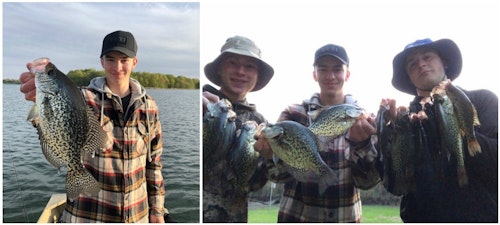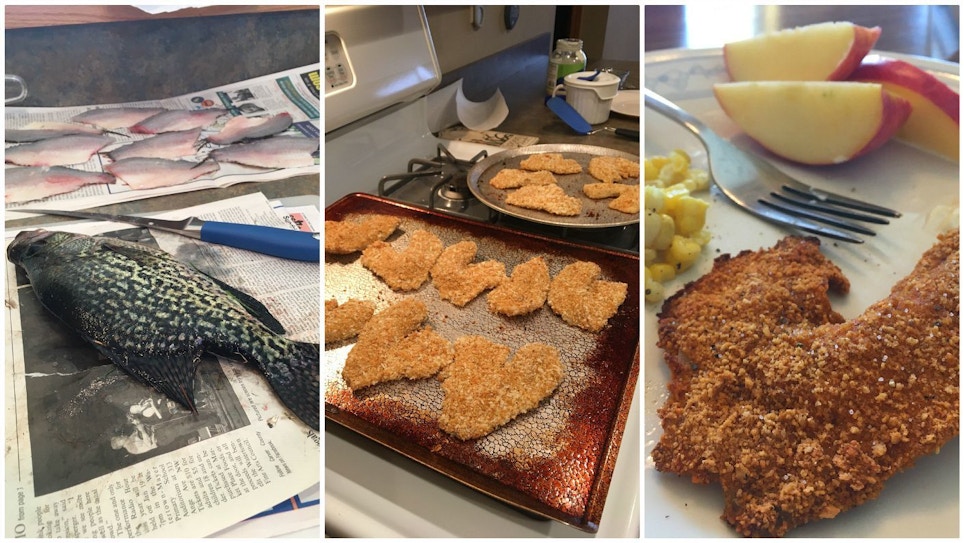I love to eat fresh fish. And it doesn’t matter the species. My two sons and I often dine on summertime channel catfish taken from a small dark-colored river within walking distance of our Minnesota home. Delicious. We like to keep a handful of bluegills and crappies taken through the ice of a local gin-clear lake. Northern pike, you ask? Sure. It takes a bit more work to remove a pike’s Y-bones, but it’s worth the effort.
The theme of this article isn’t to encourage you to release everything you catch and then purchase tilapia from the grocery store. Instead, I want you to think about selective harvest.
In simplest terms, selective harvest means keeping those fish that are numerous yet big enough to fillet.
Take crappies, for example. Here in Minnesota, the limit is 10 crappies per angler on most bodies of water. I’m not suggesting you keep 10 crappies that measure 6 inches in length. Doing so is legal, and it won’t negatively affect the overall fishery, but you won’t get much return in terms of yield (cleaned fillets).
Let’s say the crappie bite is especially good one evening, and I catch 30 fish; six of them measure 12-14 inches; 10 fish measure 10-11.75 inches; and 14 fish are 9.75 inches or less. Keep enough of a meal —two or three crappies per person at the table. In this situation, I’d keep three fish in the 10- to 11.75-inch range for myself. If my two sons wanted to eat fish, too, (read, always), then I’d keep three fish each for them, for a total of nine. Perhaps I’d toss in one more for an even 10 fish (my single limit in Minnesota) for the family.
If we needed more than 10 crappies — maybe one of my kids plans to invite a buddy over for supper — and each of us was fishing, then we’d add a few 9 and 9.5 inchers to our take.
In this example, releasing the biggest crappies, those measuring 12 inches or more, ensures those fish will reproduce and pass on their superior genes for future high-quality fish. Plus, everyone loves having the opportunity to hook and land a truly exceptional fish of any species, and a lake can’t grow 15-, 16- and 17-inch crappies if every one measuring 12-14 inches ends up in the frying pan.

Selective harvest means being selective. Harvest enough for a meal or two, but do so wisely.
Panfish, namely bluegills and crappies, are susceptible to over-harvest during winter and then again during spring spawning time, so carry a tape measure or ruler and check them before throwing them in a live well or bucket. Crappies of 12 inches or more should be released after a quick photo. The same goes for bluegills of 9 inches or more; keep bluegills measuring 7-8.5 inches and you’ll have thick fillets and the fishery won’t suffer.
Finally, just because the legal limit is 10 (or 20, or whatever), keep only what you’ll eat immediately. Don’t stock your freezer because frozen fish are never as good as fresh ones. Catch (selective harvest), cook, repeat. Getting in this pattern ensures you always stay well under your possession limit for any species, and it puts you out on the water more often. Win/win.


How Big Is Too Big?
Perhaps you’ve read this far and want some more guidance. Because this article would get too long if I tried to cover every freshwater species, I’ll detail a few of the more popular species in my home state of Minnesota. The “always release” list below simply reflects my opinion on fish I would never keep for the table.
Always Release List (author's opinion)
- Channel cats: 24 inches or more
- Northern pike: 32 inches or more
- Walleyes: 24 inches or more
- Bass (largemouth or smallmouth): I rarely eat bass, but if forced to give an answer, I’d say 16 inches or more
- Perch: 12 inches or more
- Bluegills: 9 inches or more
- Crappies: 12 inches or more
Good luck fishing this spring and summer. Keep a few fish for the table, but let the biggest ones go, even if the regs on the lake allow keeping them.







